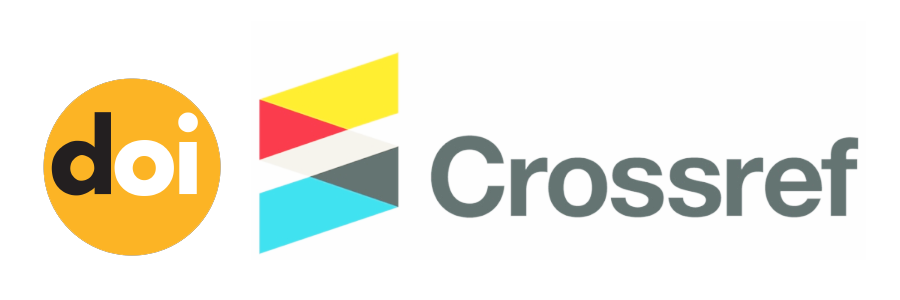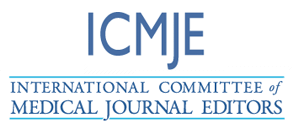Overview of Knowledge, Attitudes and Behavior of Jakarta Online Ojek Drivers Regarding Hearing Impairment Due to Use of Earphones
DOI:
https://doi.org/10.55677/IJCSMR/V4I7-02/2024Keywords:
Hearing Loss Due to Noise, knowledge of using earphones, online motorcycle taxi driversAbstract
Hearing loss due to noise or Noise Induced Hearing Loss (NIHL), a disorder that cannot be cured, is permanent, irreversible and preventable. The aim of the research was to determine the knowledge, attitudes and behavior of online motorcycle taxi drivers in Jakarta regarding hearing loss due to the use of earphones. This research took place from March - April 2023. The research design used was descriptive research with a cross sectional study approach. The number of samples for this research was 61 respondents based on the Lemeshow formula. The data collection technique uses a Google form link that has been created, then the data is processed using univariate analysis. The research results showed that 50 respondents (82%) were in the good knowledge category, 60 respondents (98.4%) were in the attitude bad, and 38 respondents (62.3%) were categorized as good behavior.
References
Mehrparvar AH, Mirmohammadi SJ, Ghoreyshi A, Mollasadeghi A, Loukzadeh Z. High-frequency audiometry: A means for early diagnosis of noise-induced hearing loss. Noise Heal. 2011;13(55):402–6.
Mirza R, Kirchner DB, Dobie RA, Crawford J, Dreger M. Occupational Noise-Induced Hearing Loss. J Occup Environ Med. 2018;60(9):E498–501.
Nordmann AS, Bohne BA, Harding GW. Histopathological differences between temporary and permanent threshold shift. Hear Res. 2000;139(1–2):13–30.
MINISTER OF MANPOWER OF THE REPUBLIC OF INDONESIA. Threshold Values for Physical Factors in the Workplace, Minister of Manpower of the Republic of Indonesia. Kep51/Men/1999. 1999;15–20.
World Health Organization. Addressing The Rising Prevalence of Hearing Loss [Internet]. World Health Organization: Geneva, Switzerland. 2018. 655–658 p. Available from:
https://apps.who.int/iris/handle/10665/260336
Kurabi A, Keithley EM, Housley GD, Ryan AF, Wong ACY. Cellular mechanisms of noise-induced hearing loss. Hear Res [Internet]. 2017;349:129–37. Available from: http://dx.doi.org/10.1016/j.heares.2016.11.013
Dudarewicz A, Pawlaczyk-Łuszczyńska M, Zaborowski K, Pontoppidan NH, Wolniakowska A, Bramsløw L, et al. the Adaptation of Noise-Induced Temporary Hearing Threshold Shift Predictive Models for Modeling the Public Health Policy. Int J Occup Med Environ Health. 2023;36(1):125–38.
Ryan AF, Kujawa SG, Hammill T, Le Prell C, Kil J. Temporary and Permanent Noise-induced Threshold Shifts: A Review of Basic and Clinical Observations. Otol Neurotol. 2016;37(8):e271–5.
Widén SE, Möller C, Kähäri K. Headphone listening habits, hearing thresholds and listening levels in Swedish adolescents with severe to profound HL and adolescents with normal hearing. Int J Audiol [Internet]. 2018;57(10):730–6. Available from: https://doi.org/10.1080/14992027.2018.1461938
Novita I, Mulyati D, Rahayu S. Relationship between the behavior of using ear hearing devices and hearing loss in students of the medical education study program. Lantern. 2015;15(13):23–8. 10.
Byeon H. Associations between adolescents' earphone usage in noisy environments, hearing loss, and self-reported hearing problems in a nationally representative sample of South Korean middle and high school students. Medicine (Baltimore). 2021;100(3):e24056.
Maria A, Zocoli F, Catalani T, Marques JM. Youth Attitude to Noise. Braz J Othorhinolaryngol. 2009;75(4):485–92. 12.
Rahmi U, Achmad BF, Marliah N. Knowledge of Class X and Xi Students About Using Earphones at Pasundan 8 High School, Bandung City. J Indonesian Nursing Educator. 2017;2(2):77.
Rifqi M, Suherlan E, Yunus A. First Year College Students Knowledge about The Impact of Using Earphones on Noise Induced Hearing Loss (NIHL) in Faculty of Medicine Islamic Bandung University. Dr Educator Pros [Internet]. 2019;0(0):203–9. Available from:
http://karyailmiah.unisba.ac.id/index.php/dokter/article/view/1471315.
Joice A, Yeni R, Berek NC, Romeo P. Relationship between knowledge, attitudes and patterns of earphone use and the incidence of tinnitus in students at SMA Negeri 7 Kupang City. 2022;8(2):43–53.
Listiana I, Hasan M, Rosmayati W. Determinants of Knowledge Level About the Risks of Using Headsets and Attitudes to Use Headsets in Students. Edu Masda J. 2021;5(1):89.
TABUK KSA. Saudi Medical Journal for Students (SMJS). ResearchgateNet [Internet]. (did):80–91. Available from: https://www.researchgate.net/profile/Omnia_El_Seifi/publication/342493529_BARRIERS_TO_HEALTH_CARE_SEEKING_REGARDING_DYSMENORRHEA_AMONG_FEMALE_STUDENTS_UNIVERSITY_OF_TABUK_KSA/links/5ef72a77299bf18816ea8124/BARRIERS- TO-HEALTH-CARE-SEEKING-REGARDING-DYSMENO
Sulaiman AH, Seluakumaran K, Husain R. Hearing risk associated with the use of personal listening devices among urban high school students in Malaysia. Public Health [Internet]. 2013;127(8):710–5. Available from:
Downloads
Published
Issue
Section
License
Copyright (c) 2024 International Journal of Clinical Science and Medical Research

This work is licensed under a Creative Commons Attribution 4.0 International License.











